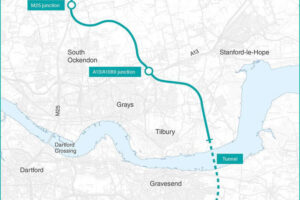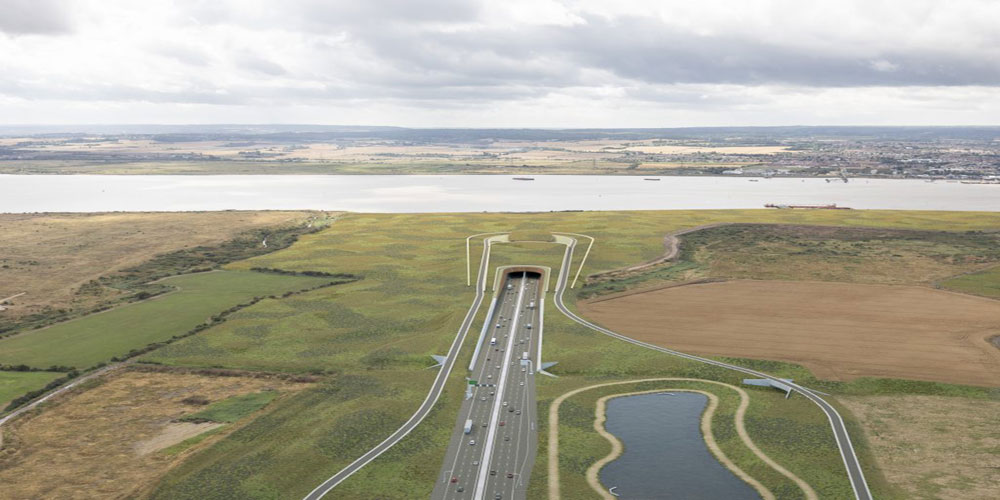Lower Thames Crossing map for M25 Route
The government backing for the Lower Thames Crossing is a major step forward for the M25 linked project which dates back to 2009 and has already had hundreds of millions of pounds of taxpayers’ money spent on the planning for it. With Rachel Reeves giving her backing to the £9 billion crossing between Kent and Essex during her speech promoting economic growth on Wednesday (January 29), it would be easy for some to think it is now a smooth process to start construction.
The Lower Thames Crossing proposal is aimed at reducing congestion on the Dartford Crossing with a motorway-style road. It would connect the A2 and M2 in Kent to the A13 and M25 in Essex through a 2.6-mile tunnel under the Thames, which would be the UK’s longest road tunnel.

The Chancellor said the 14.3-mile Lower Thames Crossing will “improve connectivity” at Dover, Felixstowe and Harwich, “alleviating severe congestion, as goods destined to export come from the North and the Midlands and across the country to markets overseas”.
The next step for the “important project” is that the Treasury is “exploring options” for it to be privately financed. Transport Secretary Heidi Alexander is expected to make a final decision on whether to approve National Highways’ application for a development consent order to build the scheme by May 23.
National Highways says the plan will almost double road capacity across the Thames east of London, describing it as “our most ambitious scheme in 35 years”. It is aiming to start construction in 2026, with the road opening in 2032.
In a speech on growth in Oxfordshire, Ms Reeves said: “We will work with the private sector to deliver the infrastructure that our country desperately needs. This includes the Lower Thames Crossing, which will improve connectivity at Dover, Felixstowe and Harwich, alleviating severe congestion, as goods destined to export come from the North and the Midlands and across the country to markets overseas.
“To drive growth and deliver value for money for taxpayers, we are exploring options to privately finance this important project.”
Steve Gooding, director of the RAC Foundation, said: “Any regular user of the Dartford tunnels and bridge knows just how badly the Lower Thames Crossing is needed. Given there was always an expectation of the new crossing being tolled, the search for a private financier to help meet the construction costs is not surprising.”
Road Haulage Association managing director Richard Smith said this was “a major victory for our sector” and claimed the “nationally significant scheme has the potential to turbocharge the economy”. He added: “After many years of delays in giving LTC the green light, today’s announcement will be a welcome relief to operators of lorries, coaches, and vans who must navigate the daily knock-on economic impact of persistent delays.”
Thurrock Council in Essex has consistently opposed the project, citing negative economic, social and environmental impacts, but the leader of Kent’s Dartford Borough Council is in favour of it. Friends of the Earth has described the scheme as “damaging”.
Responding to Ms Reeves’s comments, campaign group Transport Action Network said: “Exploring options for privately financing the Lower Thames Crossing does nothing to address its fundamental flaws: generating ever more traffic and harmful emissions, devastating the market for international rail freight, and damaging the competitiveness of our seaports north of the Thames.
“With tolls at Dartford and the Lower Thames Crossing set to be equalised, they will inevitably rise even higher to pay back investors.”
